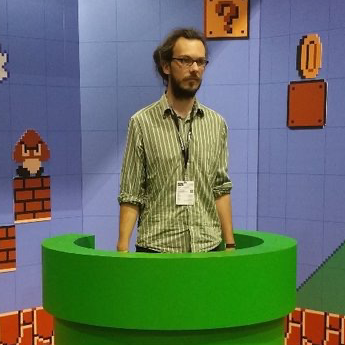Seems relevant … Ted Gioia’s article on “Signs you’re living in a world without a counter culture”: https://www.honest-broker.com/p/14-warning-signs-that-you-are-living
In general, it’s a very older-gen (boomer/x-gen) point to make at the moment, but it’s probably one of the nostalgic points worth taking seriously. I’m sure today there are certainly counter cultures. My bet is that compared to the past, they’re harder to find, generally more numerous and probably more nebulous and hard to pin down unless you’re “in them”, and, problematically, I’d imagine they tend to be “thinner” and more fragile … less “alternative world views” and more “particular vibe specific to a time and place”. Genuinely curious topic for me though.
How bleak. A couple proprietary algorithms driving millions of business decisions across the globe, everyday.
Before algorithms, it was just whoever was considered the best consultant. I don’t really see much difference here between using humans to look at data and figure out what things may have an effect at bringing in customers or otherwise increasing profits and a machine doing the same thing other than the machine doing it faster and better.
That’s just on the whole “everything is the same” front, though. It is bleak for the humans that are going to be replaced by the machine.
What’s different is the feedback loop and the globalization. Yes, it’s just capitalism, ie giving the people what they “want”, but it’s really not just the same as someone suggesting that customers like clean lines and plants.
The feedback loop is the most disturbing part, IMO. You have an algorithm deciding what gets popular, which means creatives hoping to be financially sustainable have to cater to it to some degree, which reinforces the algorithm and removes a little bit of uniqueness from society.
Creative people have always had to consider"what sells" to some degree if they want to make money from their effort, but we’ve gone beyond artists making “art with some degrees of marketability” into making products called “art” with little of the emotional/intellectual "challenge’ that comes with unique works.
i really miss the feel of early-mid-90s coffee shops. cozy, comfy, neighborhood coffeshops. like your local bar, but for the morning/afternoons. local coffee, local foodstuffs, and locals. it was a hangout spot and often had open internet workstations for that sort of stuff (obviously long before wifi and juuuust about when broadband was becoming commercially available). these were chill spaces for work, hanging out, meeting up, or just grabbing a quick cup of coffee and a biscotti.
fuck you Starsucks for killing these wonderful places.
I remember this time. It seems wild to me that I used to simply walk down to the coffee shop, just to hang out after work or on the weekend. I remember whiling away hours and hours, often closing out the shop and having to move to another coffee shop to continue a conversation. I didn’t even have a smartphone lol it was amazing
And I’m a mad introvert, I don’t know what it was about that time and place… would be nice if young people could have that again
“The franchise and the virus work on the same principle, what thrives in one place will thrive in another.” - Neal Stephenson
anodyne clones of uncomfortable spaces designed to pump out profits and burnt, sugar-bombed coffee drinks?
It’s all in the 3 ring binder.
You confused me for a sec, I’ve enjoyed Anodyne Coffee Roasting lots and thought their space is plenty comfortable lol
This is the best summary I could come up with:
Inevitably, I could quickly identify a cafe among the search results that had the requisite qualities: plentiful daylight through large storefront windows; industrial-size wood tables for accessible seating; a bright interior with walls painted white or covered in subway tiles; and wifi available for writing or procrastinating.
Accoutrements such as lights made from rusty plumbing fixtures were left behind in favour of houseplants (succulents especially) and highly textured fibre art, evoking west coast bohemia more than hardscrabble New York City.
You can ease into that space because it’s such a familiar space.” The homogeneity contrasted with the overall hipster philosophy of the 2010s, namely, that by consuming certain products and cultural artefacts you could proclaim your own uniqueness apart from the mainstream crowd – in this case a particular coffee shop rather than an obscure band or clothing brand.
It required money and a certain fluency for someone to be comfortable with the characteristic act of plunking down a laptop on one of the generic cafes’ broad tables and sitting there for hours, akin to learning the unspoken etiquette of a cocktail bar in a luxury hotel.
“Everything else is damage control.” We talk about politics, culture and travel becoming globalised, but on a more fundamental level, Spivak is correct that what really flows across the planet are various forms of money and information: investments, corporations, infrastructure, server farms and the combined data of all the digital platforms, sluicing invisibly like wind or ocean currents between nations.
Pursuing Instagrammability is a trap: the fast growth that comes with adopting a recognisable template, whether for a physical space or purely digital content, gives way to the daily grind of keeping up posts and figuring out the latest twists of the algorithm – which hashtags, memes or formats need to be followed.
The original article contains 4,235 words, the summary contains 300 words. Saved 93%. I’m a bot and I’m open source!
My first reaction was that this excerpt reminds me of a piece I wrote two years ago called “[The Airbnb-ification of the arts](https://www.staygrounded.online/p/the-airbnb-ification-of-the-arts”, about how artists looking to make a career out of art are forced to cater to an algorithm that favors comfortable predictability over depth or uniqueness. My essay was heavily inspired by “Welcome to Airspace” by Kyle Chayka.
Jokes on me for not reading the byline because it turns out Kyle wrote the book this excerpt is from! lol good for him. Looking forward to reading it.
I’m curious to know if he has a presence on Mastodon or any other Social Web apps, he’s a really great writer I’d like to follow.
It’s not just coffee shops. It’s hotel rooms and restaurants and homes. Hell, even our cars only come in two shapes now: Egg and Box.
Isn’t that two more colours than Henry Ford gave you! Sheesh! Ungrateful much!
It’s called fashion. Give it a decade, something else will become fashion.
This is part of the reason I love driving a (BMW) Mini. It’s not the best car in the world, but it looks different to all the other cars. And drives like a go kart.











